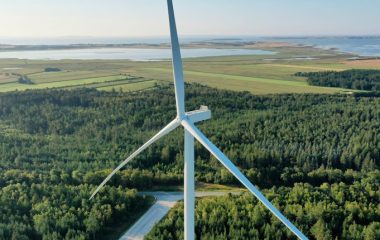
Photo: iStock
Statkraft intends to expand its hydropower cascade on the Devoll river in southern Albania with pumped storage system Moglica. The capacity is estimated at 800 MW to 1.6 GW. The facility would be connected to the reservoir of the existing Moglica hydropower plant.
Norway-based Statkraft, a major investor in hydropower in Albania, agreed with the country’s government to launch a project for a pumped storage station, Monitor reported. The document was passed to parliament for a vote.
The utility owns and operates hydropower plants Banja (72 MW) and Moglica (184 MW) on the Devoll river in the country’s south under a concession via its subsidiary Devoll Hydropower. Together they produce 700 GWh per year in optimal hydrological conditions.
Hydropower project Kokel in the same area is under consideration.
Deal signed to expand concession agreement
The Albanian government and Statkraft, which also operates wind, solar and gas-fired power plants, signed an agreement for the expansion of the concession with a pumped storage hydroelectric plant. Preliminary studies showed a potential capacity of 800 MW to 1.6 MW. The project is called RP Moglica Shtesë, – additional pumped storage hydropower plant Moglica.
The difference in height between the upper reservoir and the turbines would be 620 meters
It would be the first facility of its kind in Albania. Pumped storage is for now the only conventional technology for storing electricity. Of note, hydroelectric plants still make up almost 100% of the country’s electricity production. The government is making efforts to diversify the mix with solar power and facilitate the construction of its first wind parks and gas-fired power plants.
Reversible turbines for Moglica pumped storage facility to be installed underground
The upper reservoir, with two rock-filled dams, would be eight kilometers east of the existing Moglica dam. A tunnel, which would connect it with the underground pumped storage hydropower plant, is envisaged to lead to the reservoir of hydroelectric plant Moglica. Its lower point would be four kilometers from the dam. The difference in height would be 620 meters, the document shows.
The feasibility study is scheduled to be completed next year. If the outcome is positive, the plan is to complete the new facility in 2030.
In comparison, Albania’s biggest three hydropower plants are on the Drin river. Together with privately owned Ashta 1 and 2, the last ones in the cascade, they have 1.4 GW in total capacity. A project is underway to build the Skavica hydropower plant upstream from the existing facilities. The planned capacity is 210 MW.
As for the rest of Southeastern Europe, North Macedonia has just chosen a strategic partner for one such facility. Turkey is also working on its first pumped storage endeavors. There is a dormant project in Kosovo*.
Serbia, Greece, Romania and Slovenia already have some capacities. In recent years they all launched or revived plans for more investments in the segment. The biggest pumped storage facility in the region is in Bulgaria, but has been completely inactive for the past year and a half after a series of malfunctions.









Be the first one to comment on this article.